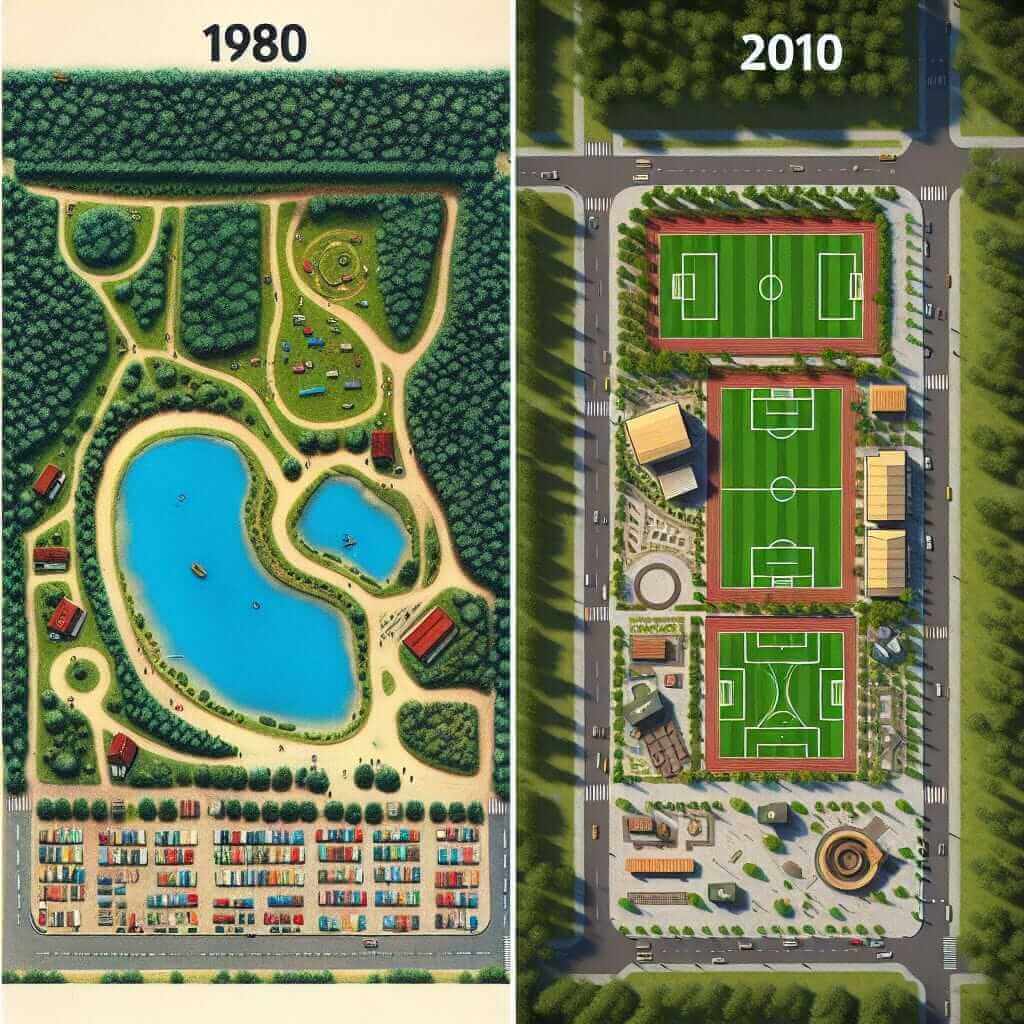As an IELTS instructor with over 20 years of experience, I’ve helped countless students navigate the intricacies of the IELTS exam, particularly the Writing section. One common challenge is describing maps in Task 1. This guide provides a comprehensive breakdown of this task, equipping you with the skills and strategies needed to achieve a high band score.
Nội dung bài viết
Understanding the Task: Describing Maps in IELTS Writing Task 1
In this task, you’ll be presented with two maps illustrating the same location at different points in time, or a single map showing a proposed or future development. Your objective is to write a minimum of 150-word report analyzing the key changes, similarities, and differences depicted.
Why is Map Description Important in IELTS?
This task assesses your ability to:
- Interpret visual data: Can you accurately understand and extract information from a map?
- Organize information logically: Can you present your observations in a clear, coherent, and structured manner?
- Use appropriate vocabulary: Can you employ a range of geographical terms and grammatical structures accurately?
How to Describe a Map Effectively
Follow these steps to craft a high-scoring map description:
1. Analyze the Maps Carefully
- Identify the key features: What are the main elements in each map? This might include buildings, roads, parks, rivers, etc.
- Note the time frame: If there are two maps, what time periods do they represent?
- Look for changes: What has been added, removed, or modified between the maps? Pay attention to size, location, and purpose changes.
2. Structure Your Response
A well-structured response is crucial for clarity. Use a four-paragraph structure:
-
Paragraph 1: Introduction
- Paraphrase the task instructions.
- State the location and time period(s) shown.
-
Paragraph 2: Overview
- Provide a general overview of the main changes or the most striking difference between the maps.
-
Paragraph 3: Detailed Description
- Describe the specific changes in detail, using clear language and appropriate vocabulary.
- Organize your description spatially (e.g., from north to south, clockwise) or chronologically.
-
Paragraph 4: Conclusion (optional)
- Briefly summarize the overall transformation or the key differences. This paragraph is not strictly necessary but can add polish to your response.
3. Use Accurate and Varied Vocabulary
- Geographical Terms: Familiarize yourself with words like “adjacent to,” “borders,” “intersects,” “expanse,” “in the vicinity of,” “surrounding,” etc.
- Prepositions of Place: Use precise language to describe locations: “to the north of,” “in the southwest corner,” “along the eastern edge.”
- Verbs of Change: Employ verbs like “transformed,” “demolished,” “expanded,” “relocated,” “converted,” “developed.”
- Adjectives of Size: Use words like “substantial,” “extensive,” “limited,” “minor,” “significant.”
4. Example from an IELTS Exam
The maps below show the changes that have taken place at a city park between 1980 and 2010.
(Insert two maps illustrating changes in a city park)

Write a report for a university lecturer describing the maps.
Sample Response:
The provided maps illustrate the transformation of a city park over three decades, from 1980 to 2010.
The most striking change is the replacement of the large wooded area in the northern section with a sports complex. In 1980, the park was dominated by a large forest, covering almost half of its total area. By 2010, this woodland had been cleared to make way for a swimming pool, tennis courts, and a large sports field.
Furthermore, significant changes are evident in the southern part of the park. The original pond has been reduced in size to accommodate a children’s playground. Additionally, the small café near the park entrance has been expanded and now includes outdoor seating. A new pathway has been constructed, connecting the playground to the café.
In conclusion, the city park has undergone a significant modernization, transitioning from a predominantly natural space into a recreational area with a focus on sports and leisure activities.
Tips for Success
- Practice makes perfect: Familiarize yourself with various map types and practice describing them regularly.
- Time management is key: Allocate your time wisely (20 minutes) to allow for planning, writing, and proofreading.
- Focus on clarity and accuracy: Use concise language, accurate grammar, and appropriate vocabulary.
- Don’t over-interpret: Stick to the information presented; avoid making assumptions or drawing conclusions not supported by the maps.
By following these strategies and practicing consistently, you can approach the IELTS map description task with confidence and achieve a high band score.